Hello, Ellen Huggins, current JEC Archives Fellow here. Welcome back to Fun, Frolics and Homecoming Queens at Davidson! In the last post, we spoke about the cultural significance of Homecoming and the Homecoming Queen ceremony. This week, we’ll be looking at the history of Homecoming at Davidson and the origins of the Homecoming Queen competition, leading up to coeducation in 1972. By looking at Davidson dating culture during Homecoming Weekend, we can hopefully gain more insight into what it was like for women as “guests” visiting campus before they were able to come to Davidson as degree earning students.
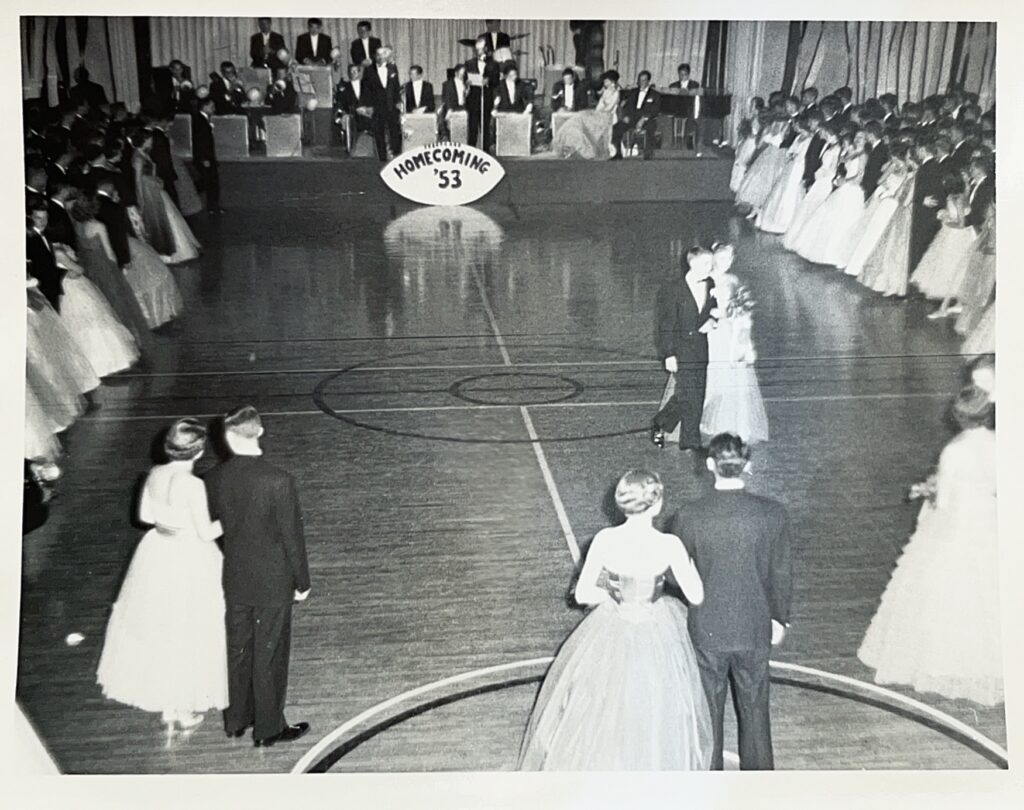
This blog post primarily looks at Homecoming editions of the Davidsonian, the Davidson College newspaper, through the fifties and sixties. It’s important to acknowledge that the women who are featured below represent a very limited demographic in the history of women at Davidson College, which will be acknowledged further in upcoming Homecoming Queen posts.
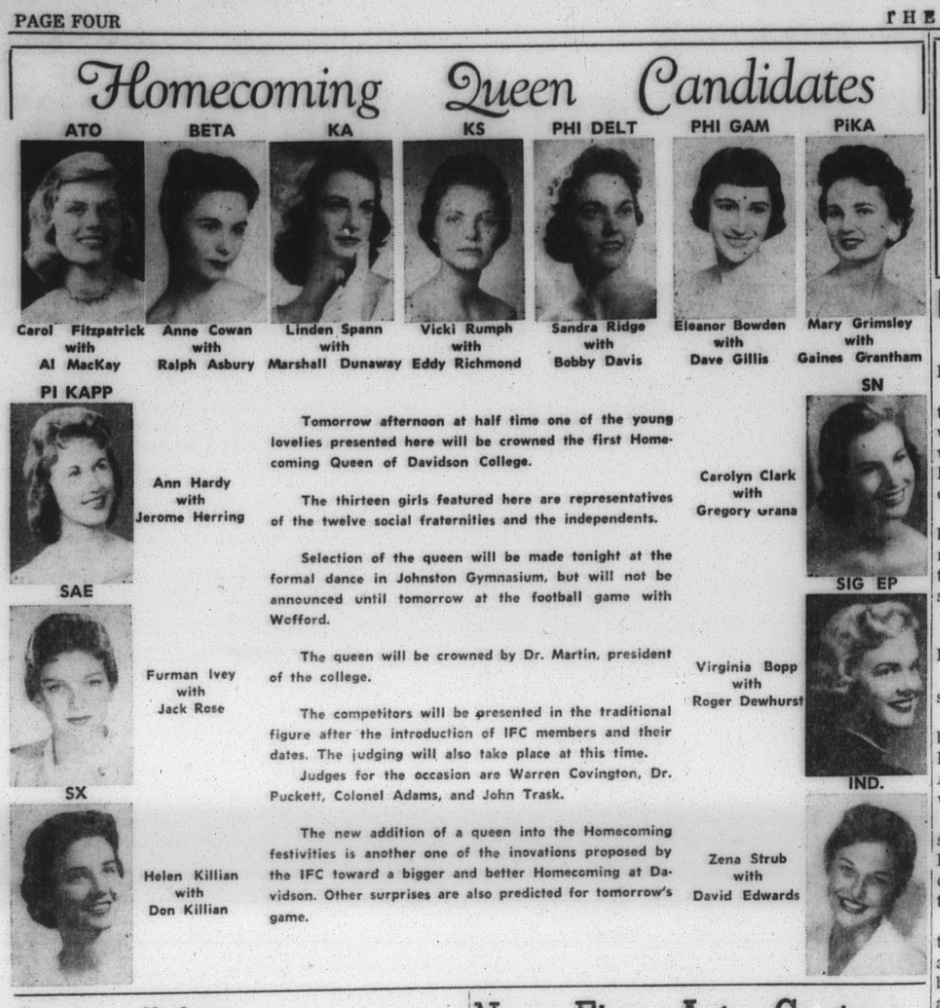
In 1959, the first Homecoming Queen competition was announced. Before this point, fraternities on campus would nominate female students from neighboring universities at as Homecoming “sponsors,” but this was the first year in which women were expected to compete for a title. In the midcentury, universities across the country began to adopt Homecoming Court as an annual tradition, and Davidson was no exception. The public pageantry of the Homecoming Queen ceremony reflected a trend in post war America towards more conservative gender roles in popular culture; crowning a queen was not only an opportunity to reward the “ideal” woman to represent Davidson College, but also provided a form of wholesome entertainment for the weekend.
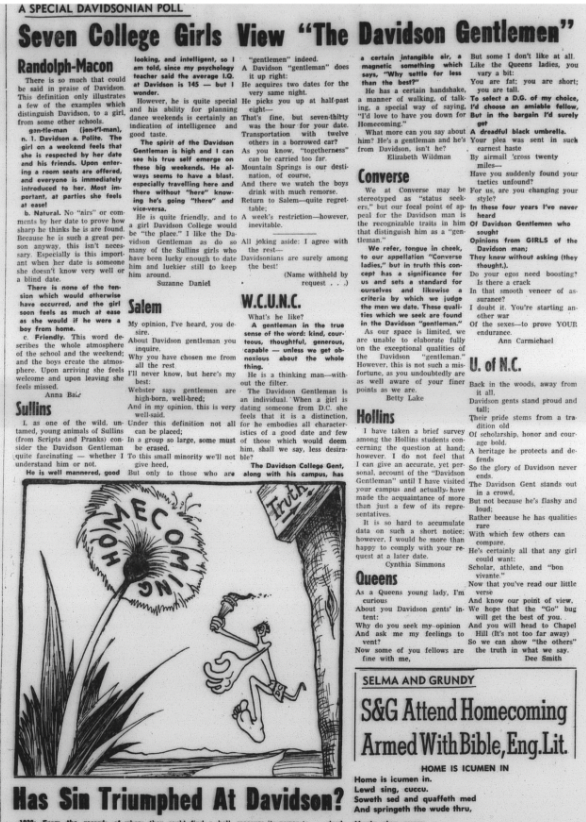
The Homecoming Queen nominees were typically students from a variety of local women’s colleges, including Queens College, Hollins University, Salem College, and others listed in the article above. These colleges were also hotspots for male Davidson students to find weekend dates for events, and in this article, published in the 1959 Homecoming Edition of the Davidsonian, female representatives from these colleges weighed in on what typical “Davidson Gentleman” was like. One student from Sullins College in Bristol, Virginia, wrote, “The spirit of the Davidson Gentleman is high and I can see his true self emerge on those big weekends. He always seems to have a blast, especially when he is traveling here and there without “here” knowing he’s going “there” and vice versa.”
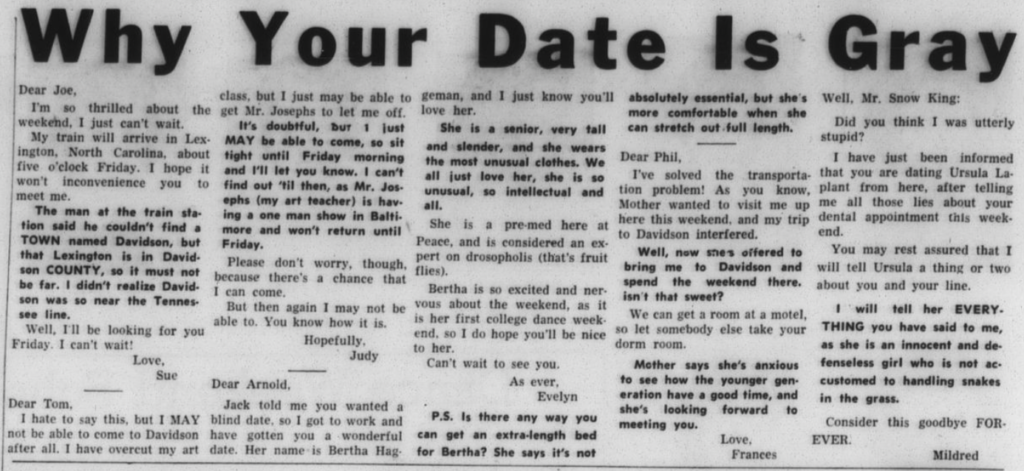
Davidson was known as a “suitcase college” in the years before coeducation. This was because many students would leave campus over the weekend either to go home or to go meet dates at neighboring colleges, leaving the campus a ghost town until classes started again on Monday. Since Davidson students weren’t able to see their dates on a regular basis leading up to the Homecoming Dance, many experienced anxiety over if/when/how their date would show up leading to the big weekend. The above article, “Why Your Date is Gray,” reflects some of those anxieties by parodying the letters male Davidson students hoped not to receive before Homecoming. Some notable examples include their date not being able to find the town, bringing their mother with them, or their date discovering that the “Davidson Gentleman” had been visiting another girl over the weekend (which could be what the Sullins student from the previous article was subtly referencing in her “traveling here and there” comment.)
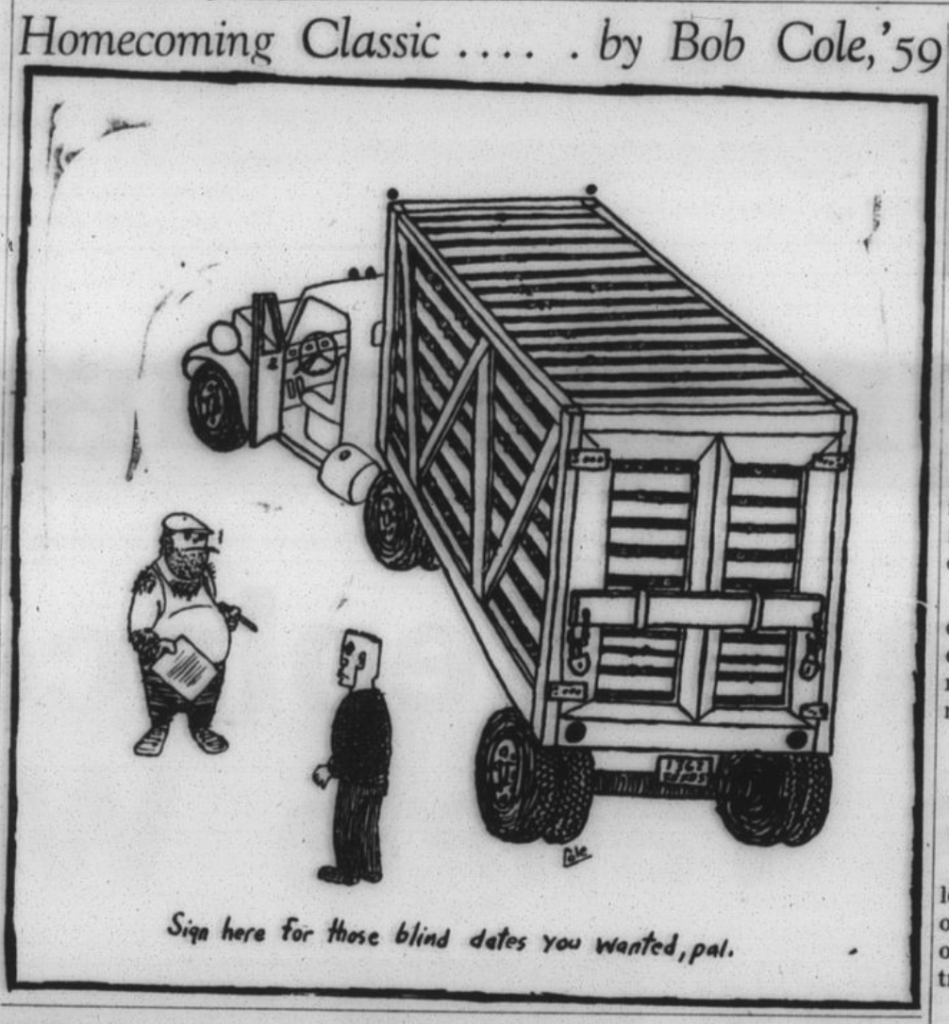
The pressure to show up with a date for Homecoming is illustrated in the “truckload” of blind dates cartoon above, which pokes fun at the sometimes superficial ways that students would procure someone to bring with them to the dance. The practice of “busing” in girls from neighboring schools for social events was another dating tradition at Davidson College that would later be challenged by female co-eds.
![Posters line the wall of a dorm room, featuring large photos of women. The caption reads, "Playmates with Clothes? - This unlikely situation occurred after two students [...] received a mandate from [...] the supervisor of dormitories to remove any nasty pictures from their bulletin board in 109 Belk before the Homecoming Weekend. They complied, but with some nifty art work rather than the removal thereof."](../wp-content/uploads/sites/5/2022/11/Davidsonian-Oct-25-1963-597x1024.png)
On Homecoming weekends, male underclassmen were moved out of their dorm rooms and into shared living quarters to accommodate the large number of visiting women who needed someplace to stay. Before they left though, some students would plan practical jokes for the arriving dates to find, like leaving behind frogs in trash cans, or in this case, drawing clothes on the Playboy posters that were meant to be (temporarily) taken down before the women’s arrival.

As we can see in the articles and comics above, women arriving for the Homecoming weekend marked a loosening of the strict academic standards and Presbyterian morals that ruled over male student’s lives for the rest of the school year. If the Homecoming Queen was once crowned as the ideal for what Davidson’s female guests could be, the meaning of the title completely changed once female co-eds could be nominated at the introduction of coeducation in 1972. This transition brought with it plenty of tension, so stay tuned for Part Three, where we’ll be looking at Homecoming Queens in the aftermath of coeducation and the mixed reactions of female co-eds towards Davidson dating culture.

Speak Your Mind